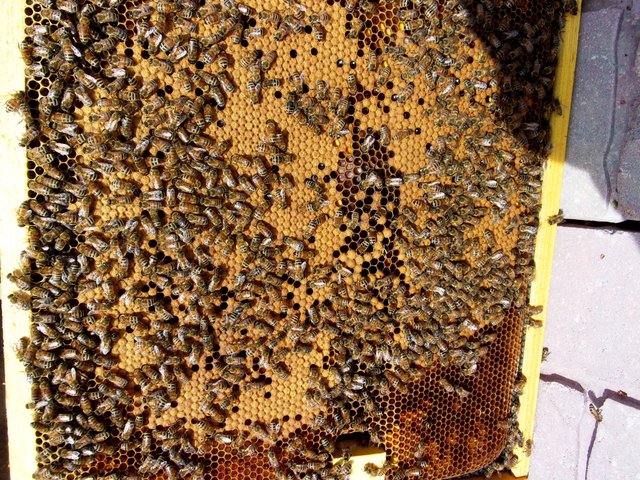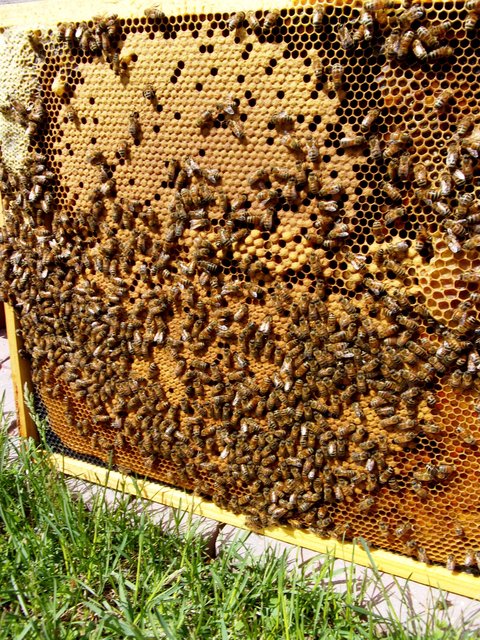Bee check #1 5/5/24
This is our first full examination of the frames in the hives. All the hives are doing great.
The bees in the 3 lb packages, say, 10,000 or maybe 8,000 bees, and one queen went into each hive 2 sunday's ago.
It took the queen a day or two or maybe as long as 5 days to get out of the cage and onto a frame to lay eggs. While she was in the cage the workers were creating the wax on the frame to hold the eggs.
Based on the pictures below, the most middle frames in each of the hives have capped brood (those hexagons that are full and covered in wax towards the middle). The queen lays eggs, then the eggs evolve into larva, then at 7 days the workers cap the brood to let them develop for 14 more days and they hatch. (our first local births could be as soon 10 days, depending on when the queen started to lay eggs)
Queens become full-grown adults within 16 days; drones develop in under 24 days and female workers require 21 days during larval and pupal development.
The population explosion begins from all of this. In 2 weeks, all those capped brood cells will birth workers. The queen may lay at a rate of 1500-2000 eggs / DAY, she is a boss. During all this time she continues to lay eggs, they get capped, they are born.
In anywhere from 2 weeks to 3 weeks or less, all the original bees in a box (the 3 lb package of bees) will have died off.
Thank you for your hard work and travel!
Queen honey bees live on average 1–2 years whereas workers live on average 15–38 days in the summer and 150–200 days in the winter.



